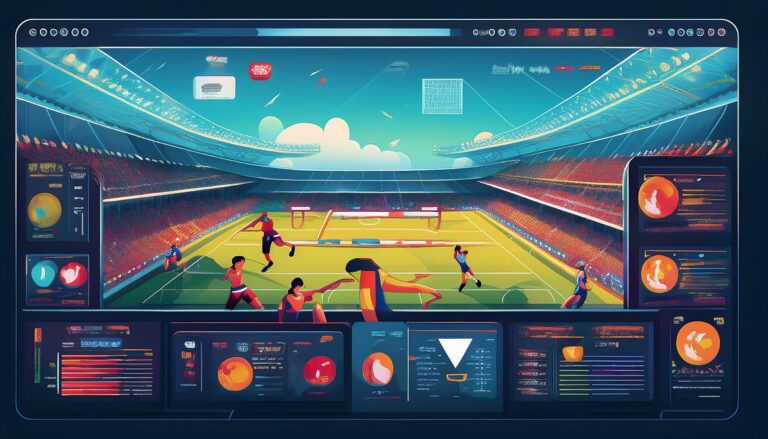The Rise of Artificial Intelligence in Cricket Analytics
Play99exch, Allpaanel: Artificial intelligence has revolutionized the landscape of sports analytics, particularly in the realm of cricket. With the massive volumes of data generated during cricket matches, AI technologies offer advanced tools to analyze player performances, team strategies, and game dynamics with unprecedented accuracy and speed. This data-driven approach has provided valuable insights into player patterns, game trends, and strategic decision-making, leading to a more informed and efficient way of understanding and enhancing cricket performances.
Through the utilization of machine learning algorithms and predictive analytics, AI has facilitated the development of innovative strategies in cricket. By leveraging historical data, real-time statistics, and performance metrics, teams and coaches can make data-driven decisions that have a tangible impact on player development and match outcomes. AI-powered tools not only provide a comprehensive analysis of player strengths and weaknesses but also offer personalized recommendations for improving performance, ultimately revolutionizing the way cricket is played and perceived.
Evolution of Cricket Data Analysis
Over the years, the evolution of cricket data analysis has revolutionized the way this sport is understood and played. From simple scorekeeping to complex statistical models, data analysis has become an integral part of cricket strategy and performance evaluation. With the advent of technology, the volume and depth of data available for analysis have increased exponentially, enabling teams and players to make more informed decisions based on data-driven insights.
The evolution of cricket data analysis has also played a crucial role in talent identification and development. By analyzing player performance metrics and identifying key areas for improvement, coaches and selectors can provide targeted training and support to maximize the potential of individual players. Moreover, data analytics has helped in shaping team strategies by identifying patterns and trends in opposition behavior, thereby allowing teams to adapt their tactics for improved performance on the field.
Role of Machine Learning in Cricket Statistics
Machine learning has revolutionized the way cricket statistics are analyzed and interpreted. By utilizing complex algorithms and statistical models, machine learning can provide insights into player performance, team strategies, and match outcomes. Through the analysis of vast amounts of data, machine learning algorithms can identify patterns and trends that may not be immediately apparent to human analysts.
One of the key advantages of using machine learning in cricket statistics is its ability to make predictions based on historical data. These predictions can range from individual player performance to team strategy optimization, aiding coaches and analysts in making more informed decisions. Additionally, machine learning can help identify areas for improvement and highlight potential weaknesses in a team’s performance, ultimately leading to more efficient training and game planning strategies.
Impact of AI in Player Performance Evaluation
Player performance evaluation in cricket has undergone a paradigm shift with the integration of artificial intelligence (AI) technologies. AI algorithms can analyze vast amounts of player data, helping coaches and team analysts gain deeper insights into individual performance metrics. By accurately measuring factors like batting average, strike rate, bowling economy, fielding efficiency, and fitness levels, AI systems provide a comprehensive assessment of a player’s overall contribution to the team.
Moreover, AI-powered player evaluation enables teams to identify patterns and trends that may go unnoticed through traditional methods. These insights allow coaches to tailor training programs and strategies according to each player’s strengths and weaknesses, leading to improved performance on the field. With real-time data tracking and analysis, AI not only enhances player evaluation processes but also revolutionizes the way cricket teams optimize their lineup and tactics for optimal results.
Advantages of AI in Cricket Strategy Development
Cricket strategy development has experienced a notable transformation with the integration of artificial intelligence (AI) technology. The advantages of utilizing AI in this realm are multifaceted. One significant benefit is the ability of AI systems to swiftly analyze vast amounts of data, providing in-depth insights into players’ performance, match patterns, and strategic trends. By processing data at a rapid pace, AI enables coaches and analysts to make informed decisions promptly and adapt strategies in real-time, enhancing the team’s competitive edge.
Moreover, AI in cricket strategy development facilitates the identification of statistically driven patterns that may not be readily apparent to the human eye. The technology can uncover correlations and trends within the data that may go unnoticed, offering a more comprehensive understanding of the game dynamics. This level of analytical depth allows teams to fine-tune their strategies with precision, identifying strengths and weaknesses in both their own gameplay and that of their opponents. Ultimately, AI empowers cricket teams to optimize their strategic approach based on data-driven insights, thereby improving performance and increasing the likelihood of success on the field.
Innovations in Cricket Technology
Over the years, cricket technology has seen significant advancements that have revolutionized the game. One of the key innovations in cricket technology is the introduction of ball-tracking systems such as Hawk-Eye. This technology provides precise data on the trajectory and movement of the ball, helping umpires make accurate decisions related to LBW appeals and line calls.
Another notable innovation in cricket technology is the use of player tracking devices. These devices collect data on players’ movements, speeds, and distances covered during a match, offering valuable insights into player performance and fitness levels. By analyzing this data, coaches and team management can make informed decisions about training regimes, workload management, and player selection.
AI-Powered Decision Making in Cricket
In the realm of cricket, the integration of AI-powered decision-making has brought about a paradigm shift in how teams strategize and make crucial choices during matches. With the aid of advanced algorithms and machine learning techniques, coaches and players can now access real-time insights and recommendations that help optimize their gameplay and maximize performance efficiency. The use of AI in cricket decision-making has not only revolutionized the way teams analyze opponents’ strengths and weaknesses but has also enabled them to make data-driven decisions that were previously based on intuition and experience.
Future Trends in Cricket Analytics
The future of cricket analytics is poised for significant advancements. With the increasing integration of artificial intelligence and machine learning algorithms, teams will have access to more sophisticated data analysis tools. These technologies will enable coaches and analysts to delve deeper into player performance metrics, allowing for more precise evaluation and strategic decision-making.
Furthermore, the use of real-time data processing and predictive analytics will revolutionize the way cricket matches are managed. Coaches will be able to receive instant insights during matches, helping them make quick and informed decisions. Additionally, the development of virtual reality and augmented reality tools may offer new perspectives for training and match visualization, enhancing the overall performance and experience for players and fans alike.
Challenges and Limitations of AI in Cricket
One of the challenges faced by AI in cricket is the complexity of the game itself. Cricket involves a multitude of variables such as player performance, weather conditions, pitch conditions, and team strategies, making it difficult for AI algorithms to accurately predict outcomes with 100% certainty. The ever-changing nature of the sport also poses a challenge, as new trends and strategies constantly emerge, requiring AI systems to adapt quickly.
Moreover, the quality of data inputted into AI systems can significantly impact the accuracy of the results. In cricket, obtaining reliable and consistent data can be a challenge, as not all aspects of the game are easily quantifiable. Factors such as player emotions, team dynamics, and off-field influences can play a crucial role in shaping the outcome of a match, but may not always be captured accurately in data sets. As AI relies heavily on data to make informed decisions, the lack of comprehensive and high-quality data poses a limitation in leveraging AI effectively in cricket analytics.
Ethical Considerations in AI-Driven Cricket Analytics
Ethical considerations play a crucial role in the integration of AI-driven analytics in cricket. One of the main concerns revolves around the ownership and privacy of player data. With the extensive collection of data on players’ performance, health, and personal information, there is a risk of data misuse or breaches if not handled ethically and securely.
Moreover, there is a growing debate on the fairness and bias in AI algorithms used in cricket analytics. The reliance on historical data to make predictions and decisions may perpetuate existing biases or unfair treatment towards certain players or teams. It is imperative for cricket organizations and data analysts to address these ethical concerns proactively to ensure the integrity and fairness of the sport.
How has artificial intelligence impacted cricket analytics?
Artificial intelligence has revolutionized cricket analytics by providing advanced statistical analysis, predictive insights, and player performance evaluation.
What role does machine learning play in cricket statistics?
Machine learning algorithms help in analyzing large datasets, identifying patterns, and predicting outcomes in cricket statistics.
What are the advantages of using AI in developing cricket strategies?
AI can provide real-time insights, optimize player performance, and help teams make data-driven decisions to enhance their strategies.
How does AI-powered decision making benefit cricket teams?
AI can help cricket teams in making informed decisions on player selection, game tactics, and strategic planning based on data-driven analysis.
What are the future trends in cricket analytics with the integration of AI?
The future of cricket analytics will see further advancements in AI technology, enhanced player tracking systems, and more accurate predictive modeling.
What are some of the challenges and limitations of using AI in cricket analytics?
Challenges include data privacy concerns, algorithm biases, and the need for human interpretation and oversight in AI-driven cricket analytics.
What ethical considerations should be taken into account in AI-driven cricket analytics?
Ethical considerations in AI-driven cricket analytics include ensuring transparency in data collection, addressing bias in algorithms, and safeguarding player privacy and consent.







